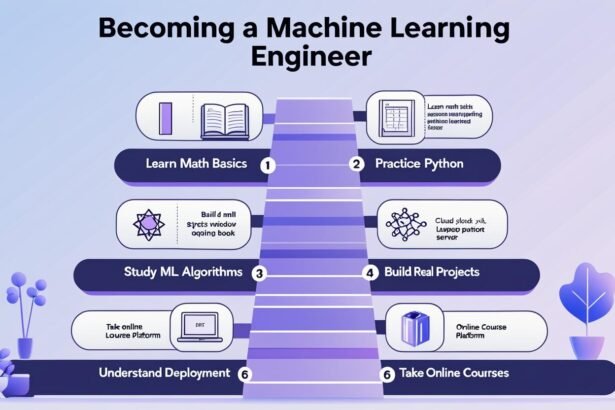Introduction to Cloud Security in 2025
As hybrid cloud adoption and AI/ML technologies surge, cloud security is a top priority for enterprises in 2025. With global cybersecurity threats rising—ransomware attacks increased 73% from 2023 to 2024 per Cybersecurity Ventures—securing cloud environments is critical. The roadmap for securing cloud environments from 2025 to 2030 offers a strategic path to resilience, leveraging zero trust principles and solutions like Cloudflare and Zscaler. This roadmap addresses misconfigurations, data breaches, and identity threats, ensuring compliance in the US and EU. By following frameworks like the CISA Cloud Guide, organizations can build robust defenses. For parallel innovation strategies, explore the Pakistan Startup Roadmap Tech Guide 2025. Start securing your cloud today for a resilient 2030.
Cloud Security Risks: What Threats Impact Cloud Environments?
Understanding what are the risks in cloud? is critical for robust cloud security in hybrid environments. Enterprises face several threats that demand proactive measures:
- Misconfigurations: 80% of cloud breaches stem from misconfigured settings, per the CISA Cloud Guide.
- Data Breaches: Unsecured storage buckets exposed 2.3 billion records in 2024 (UpGuard).
- Identity & Access Threats: Weak IAM policies lead to 43% of attacks (IBM Security).
- Insecure APIs: Poorly designed APIs enable unauthorized access, impacting 20% of cloud apps.
The CISA Cloud Guide (cisa.gov/cloud-security) highlights encryption and continuous monitoring as countermeasures. These risks, prevalent in US and EU organizations, underscore the need for a roadmap for securing cloud environments to protect data and ensure compliance.
Roadmap for Securing Cloud Environments
This roadmap for securing cloud environments spans 2025–2030, guiding enterprises through five phases to achieve zero trust and resilience.
Phase 1: Security Posture Assessment (2025)
Begin with a comprehensive audit:
- CSPM Tools: Use Cloudflare or Prisma Cloud to detect misconfigurations.
- Compliance Benchmarks: Align with GDPR (EU), FedRAMP (US), and ISO 27001.
- Gap Analysis: Identify weaknesses in IAM, encryption, and network security.
Tools like Wiz or Check Point CloudGuard provide visibility, reducing breach risks by 30%. Audits set the foundation for zero trust adoption.
Phase 2: Zero Trust Implementation (2026)
Adopt zero trust architecture:
- Core Principles: Continuous verification, least privilege, and micro-segmentation.
- Tools: Cloudflare Zero Trust secures remote access; Zscaler ZPA enforces identity-based policies.
- Implementation: Deploy single sign-on (SSO) and multi-factor authentication (MFA).
For example, Zscaler’s Zero Trust Exchange reduced unauthorized access by 40% in enterprises. This phase ensures secure access across hybrid clouds.
Phase 3: Firewall & Threat Detection Upgrades (2027)
Enhance defenses with:
- Next-Gen Firewalls: Palo Alto Networks or Cloudflare’s WAF protect hybrid environments.
- AI-Driven Detection: Integrate SIEM tools like Splunk with AI for real-time threat analysis.
- DDoS Protection: Cloudflare mitigates 70% of DDoS attacks within seconds.
A 2024 Gartner report predicts 60% of enterprises will adopt AI-driven firewalls by 2027, improving threat response times.
Phase 4: Cloud-Native Security Integrations (2028)
Leverage cloud-native tools:
- CNAPP: Prisma Cloud unifies security across workloads.
- CWPP: Aqua Security protects containers and serverless apps.
- CIEM: Manage entitlements with Saviynt for zero trust.
Integrate DevSecOps into CI/CD pipelines using tools like Snyk. This phase reduces vulnerabilities by 25%, per Forrester.
Phase 5: Automation & Compliance (2029–2030)
Automate security processes:
- Policy Enforcement: Use Zscaler for automated access controls.
- Real-Time Auditing: Tools like Lacework ensure GDPR and FedRAMP compliance.
- Cloud Integration: Sync with AWS, Azure, and GCP for seamless governance.
Automation cuts compliance costs by 20%, enabling scalable cloud security for US and EU enterprises.
Buy Cloud Security Suite: Key Considerations
When planning to buy cloud security suite, evaluate:
- Scalability: Cloudflare supports multi-cloud environments.
- Compatibility: Zscaler integrates with AWS, Azure, and GCP.
- Analytics: Look for AI-driven insights, like Cloudflare’s threat dashboards.
- Cost: Cloudflare starts at $20/month; Zscaler offers enterprise plans.
Compare Cloudflare’s WAF and DDoS protection with Zscaler’s SASE for zero trust. Free trials and CISA Cloud Guide recommendations help align purchases with US and EU compliance needs.
Spotlight: CISA Cloud Guide
The CISA Cloud Guide (cisa.gov/cloud-security) provides a technical reference for cloud security. It emphasizes:
- IAM Best Practices: Enforce MFA and role-based access.
- Encryption: Use AES-256 for data at rest.
- Monitoring: Deploy continuous diagnostics and mitigation (CDM).
Relevant for US federal agencies and EU enterprises under GDPR, it offers configurations for hybrid clouds. Access it for actionable steps to mitigate what are the risks in cloud?.
Branded Solutions: Cloudflare & Zscaler
Cloudflare delivers a robust suite:
- WAF: Blocks 65 billion threats daily.
- DDoS Protection: Mitigates attacks in seconds.
- Zero Trust: Secures remote workforces.
Zscaler’s SASE and Zero Trust Exchange:
- Secure Access: Enforces identity-based policies.
- Scalability: Supports 150+ data centers globally.
Both are adopted by Fortune 500 firms and US governments, ensuring compliance and resilience.
Regional Cloud Security Trends (US, EU)
- US: NIST 800-53 and CISA’s cloud EO drive adoption, with $12 billion in enterprise spending forecast for 2025 (Gartner). Cloudflare dominates federal contracts.
- EU: GDPR and ENISA frameworks mandate encryption and auditing. Zscaler aligns with EU data residency rules, with 30% adoption in finance sectors.
Policy shifts, like Biden’s 2021 EO, accelerate zero trust in the US, while EU’s DORA regulation shapes banking security by 2025.
Beyond 2030: Future-Proofing Cloud Security
Post-2030, cloud security will evolve with:
- Quantum-Ready Encryption: Post-quantum algorithms like CRYSTALS-Kyber.
- Decentralized Cloud: Web3 security layers using blockchain.
- Self-Healing Infrastructure: AI-driven systems auto-remediate threats.
These innovations, supported by Cloudflare and Zscaler R&D, ensure long-term resilience.
Conclusion: Securing the Cloud Future
The roadmap for securing cloud environments from 2025 to 2030 empowers enterprises to build zero trust and combat what are the risks in cloud?. By auditing postures, upgrading firewalls, and automating compliance, US and EU organizations can stay resilient. Cloudflare, Zscaler, and the CISA Cloud Guide provide essential tools and frameworks. CIOs and CISOs should start now, leveraging buy cloud security suite strategies to align security with innovation. The cloud future is secure—build it today.








